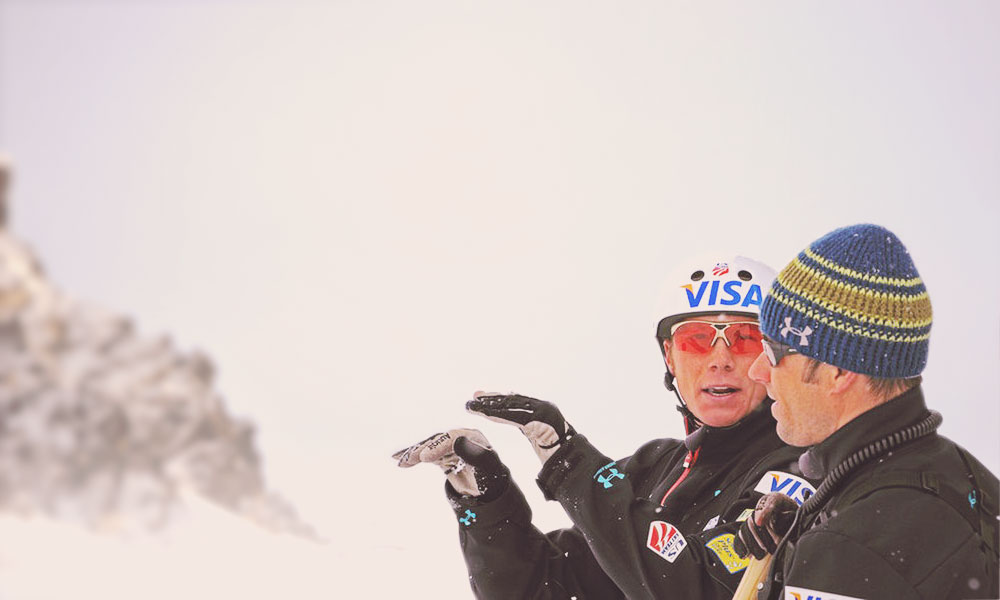 Name: Brian “Curdog” Currutt
Name: Brian “Curdog” Currutt
Age: 38
Olympian: 6th place, 2002 Salt Lake City Olympics
Coach: 2010 Vancouver Olympics
BRAD: In my first novel, The Lions Of Lucerne, readers are introduced to Scot Harvath who, like you, is also a former Freestyle skier. Tell us about the training, discipline, and some of the characteristics necessary for this sport, especially those necessary to compete on an Olympic level.
BRIAN: Passion is a primary characteristic required to be successful in anything in life, including athletics. If you have passion for what you’re doing, success will follow. Persistence is another valuable trait in an Olympian. No Olympic athlete ever had an easy road to the Olympics. Many encounter injuries or financial obstacles they must get past before putting on a Team USA uniform. I personally had to overcome two ACL reconstructions before ever earning a spot on the US Ski Team.
Aerial training is a year-round job. It consists of weight training, trampoline, and sport-specific training on the water ramps. The competition season is long; beginning in early December, finishing in late March. The World Cup tour, as it’s called, consists of 12-14 stops around the globe. Each stop is a competition in a different country.
BRAD: What specifically is “Freestyle skiing” and how did it evolve.
BRIAN: Traditionally, Freestyle skiing has consisted of three individual sports: Moguls, Aerials, and Ballet skiing. Ballet, also called acro skiing, was cast off in 1999. Freestyle skiing became a haven for those who wanted to compete in non-traditional ski racing. Aerials evolved from “Hot Dog” skiing in the 1970’s into an Olympic Sport in 1994. Traditional hot doggers were larger-than-life characters that lived their lives by their own set of rules. “Hot Dog: The Movie” says it all. It’s a classic! As the sport gained mainstream notoriety, the hot doggers evolved into real athletes. They began year-round serious training programs.
Today, freestyle skiing consists of more than just Moguls and Aerials. Skier Cross became part of Freestyle for the 2010 Olympics. Ski Halfpipe and Slopesyle have been added to the program for the upcoming Sochi Olympics.
BRAD: You competed in aerials in the Olympics, and then went on to coach Jaret Peterson at the Vancouver Olympics. How did you get into this sport?
BRIAN: I am originally from a small town 25 miles East of Cleveland, OH called Chesterland. Chesterland was home to Alpine Valley Ski Area where I spent many hours growing up. When skiing there, all I wanted to do was jump and get the skis off the ground. I had seen Aerials at the 1988 Calgary Olympics on TV and fell in love with the sport. When I was in high school, I had an opportunity to travel to Lake Placid, NY to try Aerials in the pool for the first time. Once putting the skis on and flipping into the pool, I was totally hooked! I moved to Park City, UT to train full time and to attend college shortly thereafter.
BRAD: Where is your favorite place to ski?
BRIAN: The Wasatch Mountains of Utah is my favorite place to ski. Alta is probably my favorite resort there. It is a skiers-only mountain with a steep and varied terrain. Also, Utah boasts “The greatest snow on earth” for a reason………it is!
BRAD: You and I have been friends since back when I lived in Park City. I know you have read some of my books. Which one is your favorite?
BRIAN: I have read all of your books. I continue to still come back to Path Of The Assassin as my favorite. I’m not sure why, but I think you created a great family of villains in the Nidals. Also, I always had a soft spot for Meg Cassidy. I have a great image of what she looks like in my head.
BRAD: So do I. It will be great to see how she gets depicted on the big screen at some point. Until then, we all have the book and our imaginations. By the way, Path Of The Assassin is a great pick as it is the next book we’re reading in our book-a-month 2013: Year of Brad Thor.
Thank you, Brian, not only for a great interview, but also for representing our country so honorably on the US Freestyle Ski Team.